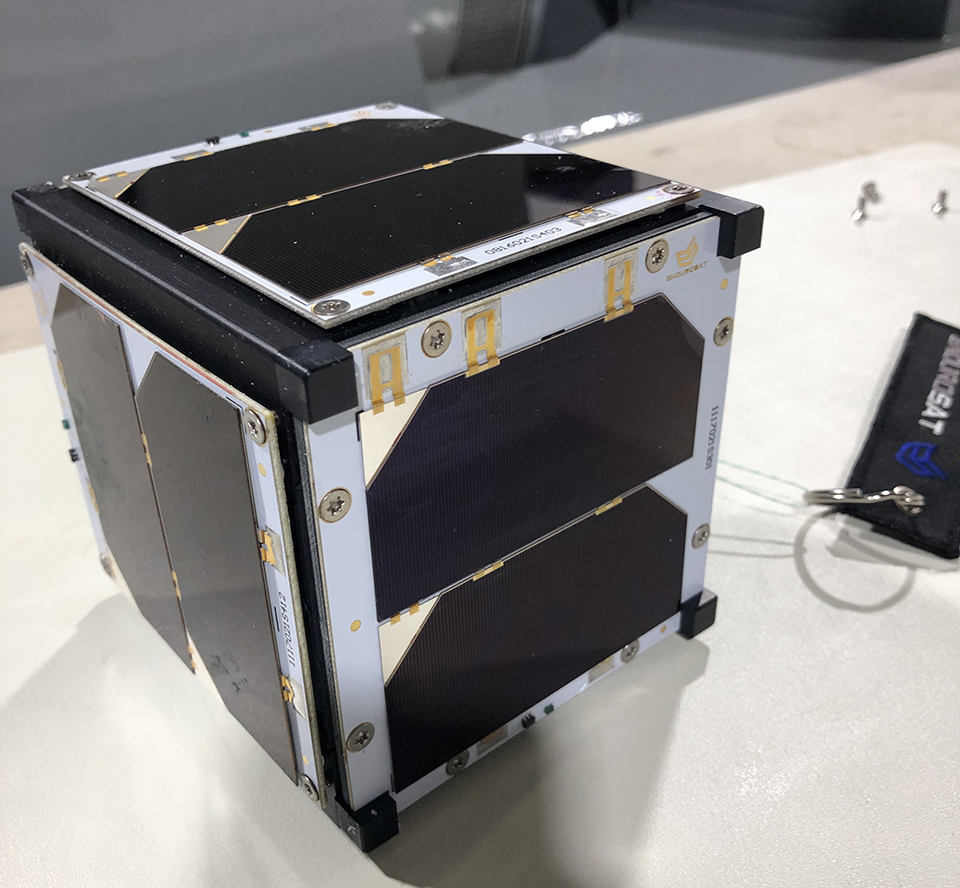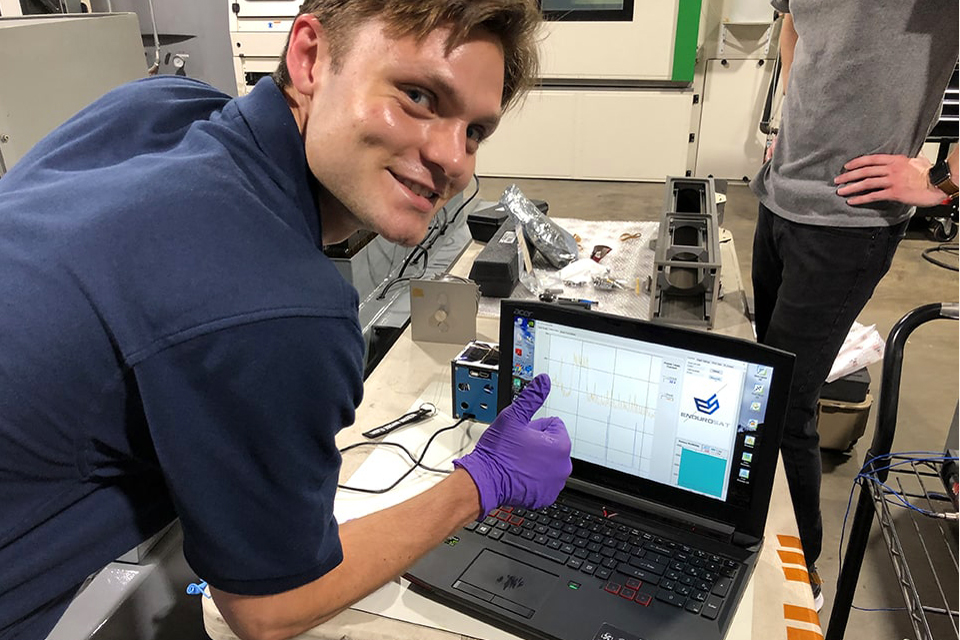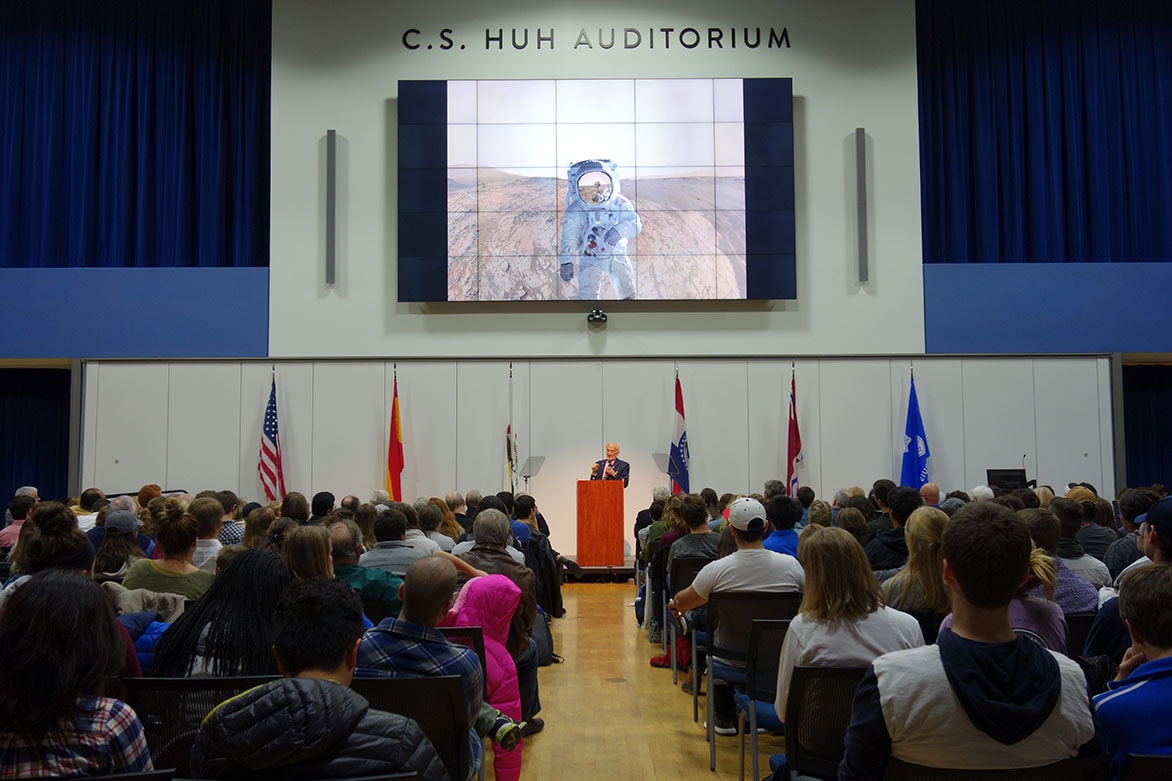Beyond Apollo: Saint Louis University Is Training Students for Tomorrow’s Challenges
Maggie Rotermund
Senior Media Relations Specialist
maggie.rotermund@slu.edu
314-977-8018
Reserved for members of the media.
07/18/2019
As the world looks to the sky to remember man’s first steps on the moon, students and faculty from Saint Louis University’s Parks College of Engineering, Aviation and Technology are looking ahead to their next mission – the launch of Argus-2 this fall.
Michael Swartwout, Ph.D., associate professor of aerospace and mechanical engineering at Parks, said SLU’s Argus-2 will be launched in October to the International Space Station (ISS). The Argus-2 is going into space as part of NASA’s Educational Launch of Nanosatellites (ELaNa) program.
“The best training for spacecraft engineers is to get something built and flying,” Swartwout says. “It’s to take an idea, get it engineered, to get it built and to get it into space.”
The team will fly with the spacecraft down to the NanoRacks facility in Houston around Aug. 12. NanoRacks is the private company that handles the spacecraft ejection system on the space station.
Earlier this week, the team did an environmental test in Indianapolis, putting the spacecraft into a demonstration version of the NanoRacks CubeSat Deployer ejection tube.
NanoRacks will take SLU’s spacecraft, load it into the ejection system with 10 others and deliver the whole stack for launch. An NG-12 cargo rocket will launch to the ISS in mid-October from NASA’s Wallops Flight Facility in Virginia.
“The ejection system will be brought into the ISS, put in storage and, eventually be moved into the airlock, where the Canadarm2 system will grab it and pull the ejection system into position outside the ISS,” Swartwout said. “From there, individual spring-loaded doors are opened and the spacecraft inside are spring-ejected into orbit, away from the ISS.”
That release is currently slated for January 2020.
NASA calls the 4-by-8-inch, 6-pound satellite Argus-2. The original Argus was lost to rocket failure in 2015.

Around SLU, students and faculty have taken to calling the Cube-Sat “MVP,” because in their quest to create a more efficient spacecraft the Space Research Lab decided to keep things simple and built the Minimum Viable Product that could still do something useful in space.
“It’s also our MVP or Most Valuable Player because after the loss of COPPER and Argus -1, our lab really wants a successful mission,” Swartwout said.
Argus-2 first takes on some of the original Argus mission; the satellite will fly with a commercial SD memory card, and SLU’s lab will be routinely checking it for errors.
“Space radiation can damage/change the memory,” Swartwout explained, “Such that a 1 becomes a 0 or vice versa. We want to understand how often those errors occur, so we can determine things like how many copies of critical data do we need to store in memory to ensure that we have at least one good copy.”
A camera will be capturing pictures of the Earth, and on-board software will identify “interesting” features in those images. Researchers will then train the system in what is actually interesting, so it can learn to do it better on its own.
The second objective of Argus-2 is to take a baby-step towards SLU’s next space project, called DORRE. DORRE will be a small constellation of two or more spacecraft and two or more ground systems (telescopes). AI techniques will be used to automatically detect and sense natural events, such as auroras, thunderstorms or meteors.
“The long-term goal of DORRE is to demonstrate that we can move control of the mission from the ground (where all major decisions are made by people) up to the spacecraft,” Swartwout said. “Such a move is needed to enable better use of the limited communications resources and round-trip light delays for deep space missions to let the spacecraft more rapidly detect and respond to interesting, short-term science events.”
A Storied History, A Bright Future
SLU students get hands-on learning experiences to prepare them for careers in innovation.
“We’re giving students the opportunities and experiences necessary to jump into a career in space,” Swartwout said. “That in terms of the big SLU picture has been happening all along.”
Parks alumni have participated in the launch of every NASA manned mission. In 2018, Fernando Abilleira (Parks ’99, Madrid ’01), worked on the Mars Insight Mission. In 2017, Apollo 11 astronaut Edwin “Buzz” Aldrin thanked the SLU alumni who helped put America’s astronauts in orbit.
Aldrin spoke at SLU as part of the University’s student-run Great Issues Speakers Series. He told the SLU crowd that “St. Louis has always played a major part in NASA activities,” giving a special nod to members of the “Old Mac Club” – former employees of McDonnell Douglas – who helped get NASA crews to the moon.
SLU’s Space Systems Research Laboratory has been actively working since 2009. Members of the lab have gone on to work for Boeing and other space contractors, including Space X.
Saint Louis University is a Catholic, Jesuit institution that values academic excellence, life-changing research, compassionate health care, and a strong commitment to faith and service. Founded in 1818, the University fosters the intellectual and character development of more than 13,000 students on campuses in St. Louis and Madrid, Spain. Building on a legacy of now more than 200 years, Saint Louis University continues to move forward with an unwavering commitment to a higher purpose, a greater good.

